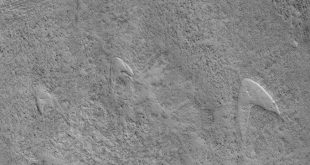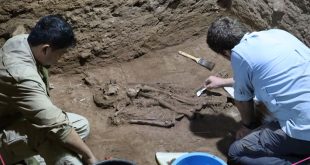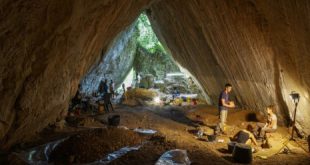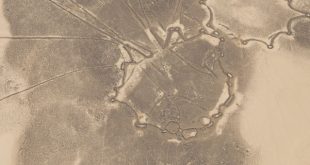Mars is truly a fascinating planet. Not only because it was once a place that resembled Earth, with massive oceans, river systems, and lakes, but because life as we know it may have developed there at one point. Whether this was the case remains to be seen, and various scientific …
Read More »The Queen’s Death Sparks Conversation Around Royal Line of Succession
In 1953, 8,251 guests from 181 countries and territories participated in the coronation of Elizabeth II. Read more Section: News General History Famous People Read Later Source: Ancient Origins
Read More »Possible Evidence of Amputation Dates Back 31,000 Years
BRISBANE, AUSTRALIA—According to a Live Science report, 31,000-year-old remains recovered from a limestone cave in a remote region of the Indonesian portion of the island of Borneo bear evidence of surgical limb amputation. When the bones were unearthed by Tim Maloney of Griffith University, India Ella Dilkes-Hall of the University …
Read More »Traces of Native American Village Found in Florida
ST. AUGUSTINE, FLORIDA—According to a First Coast News report, St. Augustine city archaeologist Andrea White and her colleagues have found pottery and postholes from Palica, a Native American village, under a nineteenth-century house in St. Augustine’s Lincolnville neighborhood. The house was constructed a couple of feet above the ground, which …
Read More »NELLA GROTTA DI ARMA VEIRANA, IN LIGURIA, RINVENUTI RESTI DI NEONATO DI 10.000 ANNI FA
Per leggere questo articolo occorrono 4 minuti Durante il Mesolitico anche i neonati avevano diritto a una sepoltura, nonostante la breve vita. Nel 2017 un team di archeologi ha scoperto i resti di un essere umano di poco più di due mesi, morto all’incirca 10.000 anni fa, deposto in una …
Read More »UK Couple’s Home Renovation Leads to Rare Coin Hoard Worth $280,000
When a couple living in an 18th-century North Yorkshire village home embarked on a renovation project, they were ready to spend money, and redoing the old kitchen floor was on the list. Read more Section: Artifacts Other Artifacts News History & Archaeology Read Later Source: Ancient Origins
Read More »Hundreds of Monumental “Kites” Spotted in Arabian Desert
OXFORD, ENGLAND—According to a statement released by the University of Oxford, some 350 monumental structures known as “kites” have been spotted in northern Saudi Arabia and southern Iraq with satellite imagery. Michael Fradley of Endangered Archaeology in the Middle East and North Africa (EAMENA) and his colleagues used open-source satellite …
Read More »Study Reveals Glaciers Flowed on Ancient Mars
Since Mars lacks glacial valleys, scientists believed that ancient ice masses on the Red Planet must have remained frozen to the ground, remaining motionless throughout the planet’s history. A variety of valleys and fjords have been carved into the surface of the Earth by the weight and grinding movement of …
Read More »Victorian-Era Wallpaper Killed Countless Children
Wallpaper isn’t as popular as it once was, and perhaps the reason for its fall from fashion was its ability to kill! Read more Section: News Weird Facts Read Later Source: Ancient Origins
Read More »Pottery Yields Molecular Traces of Neolithic Meals
BRISTOL, ENGLAND—According to a statement released by the University of Bristol, Simon Hammann, Luce Cramp, and their colleagues analyzed residues collected from pots recovered from crannog sites in Scotland’s Outer Hebrides. The study suggests that early Neolithic cooks used cereals, dairy products, and meat as ingredients as early as 4000 …
Read More » Archeology News Archeology News
Archeology News Archeology News









